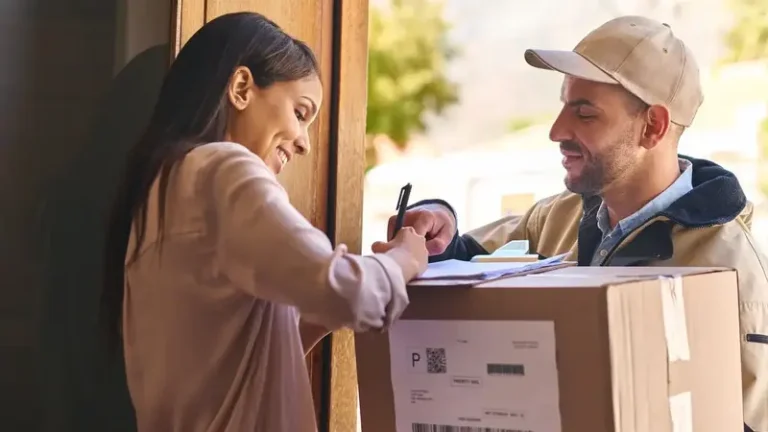Customer satisfaction is crucial in today’s competitive market. Delivering products quickly and efficiently can lead to repeat business and positive word-of-mouth. When customers receive their orders on time and in good condition, their overall satisfaction with the service increases, which can significantly benefit your business in the long run.
Companies can enhance customer service by implementing an AI phone answering system to ensure timely customer communication. The system helps customers query promptly and accurately information about delivery times and any issues that arise during delivery.
Key Takeaways
- Understand the importance of optimizing last-mile delivery for improved customer satisfaction.
- Explore various strategies to enhance last-mile delivery efficiency.
- Find out about the most recent technical developments in the sector.
- Discover how to overcome common challenges in last-mile delivery.
Effective Strategies for Last-Mile Delivery
Effective last-mile delivery strategies can set a company apart from its competitors. Here are some proven tactics:
Optimizing Delivery Routes
Advanced software solutions that map the fastest and most efficient paths for drivers can drastically reduce delivery times. Route optimization software can consider factors such as traffic conditions, roadblocks, and delivery time windows, making it easier for drivers to plan their routes effectively.
Flexible Delivery Options
Implementing same-day or scheduled deliveries can cater to various customer needs. For instance, some customers prefer to receive their orders within a specific time window, while others might need expedited delivery. Offering these flexible options can significantly enhance customer satisfaction.
Using Local Hubs
Establishing local hubs and micro-distribution centers can reduce delivery times and distances. This approach helps store goods closer to the customer base, allowing quicker dispatches and reducing the travel time for delivery vehicles.
Technological Advancements in Last-Mile Delivery
Technology is transforming the way last-mile deliveries are executed. Innovations such as automated delivery robots and drones are beginning to revolutionize the industry. These technologies can operate with minimal human intervention, reducing labor costs and increasing delivery efficiency. In urban areas, drones can navigate traffic faster than traditional vehicles, ensuring quicker deliveries.
Advanced analytics and machine learning algorithms allow companies to predict delivery times more accurately and optimize logistics networks. These technologies may analyze large data sets to reveal delivery trends, consumer preferences, and bottlenecks. It enables companies to boost production and streamline their operations.
Technology is also essential for tracking and monitoring delivery to guarantee accountability and transparency. Real-time tracking systems allow customers and businesses to monitor the exact location of their deliveries, providing peace of mind and reducing the chances of lost or delayed shipments.
Common Challenges in Last-Mile Delivery and Solutions
Challenges such as traffic congestion failed deliveries, and high operational costs can hamper the efficiency of last-mile delivery. Here are some solutions to these common issues:
- Traffic Congestion: Real-time traffic data from GPS systems can help drivers navigate heavy traffic and find efficient routes, reducing congestion and ensuring faster travel times.
- Failed Deliveries: Automated lockers and drop-off points can minimize failed deliveries due to unavailability, allowing customers to pick up their deliveries at their convenience, thereby reducing operational costs.
- High Operational Costs: Outsourcing logistics to third-party providers can reduce operational costs by efficiently handling large deliveries, allowing businesses to focus on core activities while ensuring timely deliveries.
Future Trends in Last-Mile Delivery
Last-mile delivery has a bright future thanks to smart cities, electric cars, artificial intelligence, and logistics developments. By lowering carbon emissions, these trends increase efficiency and support environmental sustainability. Businesses must keep ahead of these trends to match client expectations and be competitive in a constantly changing industry. Visit World Fame Magazine for more details.
